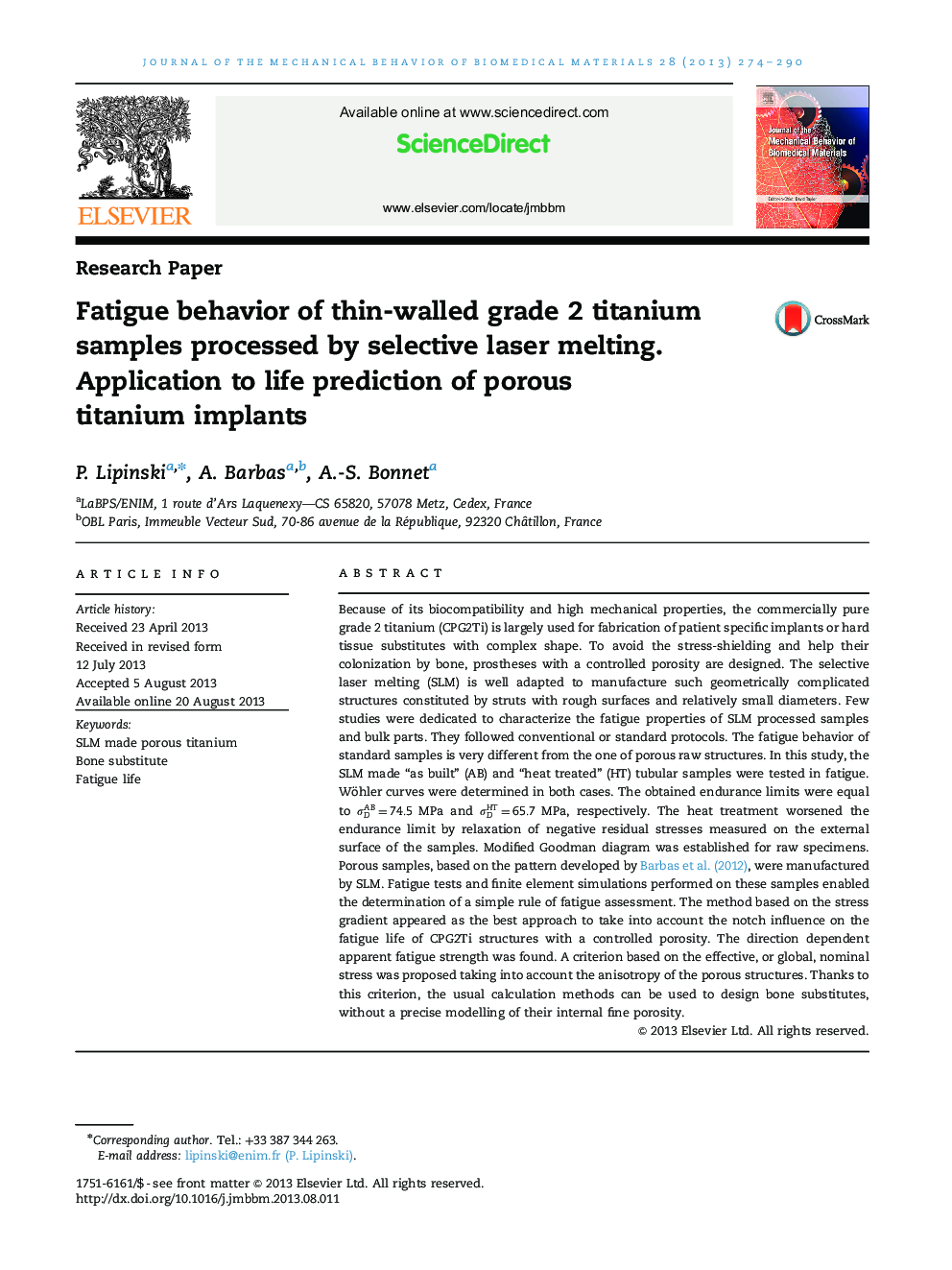| Article ID | Journal | Published Year | Pages | File Type |
|---|---|---|---|---|
| 7209238 | Journal of the Mechanical Behavior of Biomedical Materials | 2013 | 17 Pages |
Abstract
Because of its biocompatibility and high mechanical properties, the commercially pure grade 2 titanium (CPG2Ti) is largely used for fabrication of patient specific implants or hard tissue substitutes with complex shape. To avoid the stress-shielding and help their colonization by bone, prostheses with a controlled porosity are designed. The selective laser melting (SLM) is well adapted to manufacture such geometrically complicated structures constituted by struts with rough surfaces and relatively small diameters. Few studies were dedicated to characterize the fatigue properties of SLM processed samples and bulk parts. They followed conventional or standard protocols. The fatigue behavior of standard samples is very different from the one of porous raw structures. In this study, the SLM made “as built” (AB) and “heat treated” (HT) tubular samples were tested in fatigue. Wöhler curves were determined in both cases. The obtained endurance limits were equal to ÏDAB=74.5MPa and ÏDHT=65.7MPa, respectively. The heat treatment worsened the endurance limit by relaxation of negative residual stresses measured on the external surface of the samples. Modified Goodman diagram was established for raw specimens. Porous samples, based on the pattern developed by Barbas et al. (2012), were manufactured by SLM. Fatigue tests and finite element simulations performed on these samples enabled the determination of a simple rule of fatigue assessment. The method based on the stress gradient appeared as the best approach to take into account the notch influence on the fatigue life of CPG2Ti structures with a controlled porosity. The direction dependent apparent fatigue strength was found. A criterion based on the effective, or global, nominal stress was proposed taking into account the anisotropy of the porous structures. Thanks to this criterion, the usual calculation methods can be used to design bone substitutes, without a precise modelling of their internal fine porosity.
Keywords
Related Topics
Physical Sciences and Engineering
Engineering
Biomedical Engineering
Authors
P. Lipinski, A. Barbas, A.-S. Bonnet,
